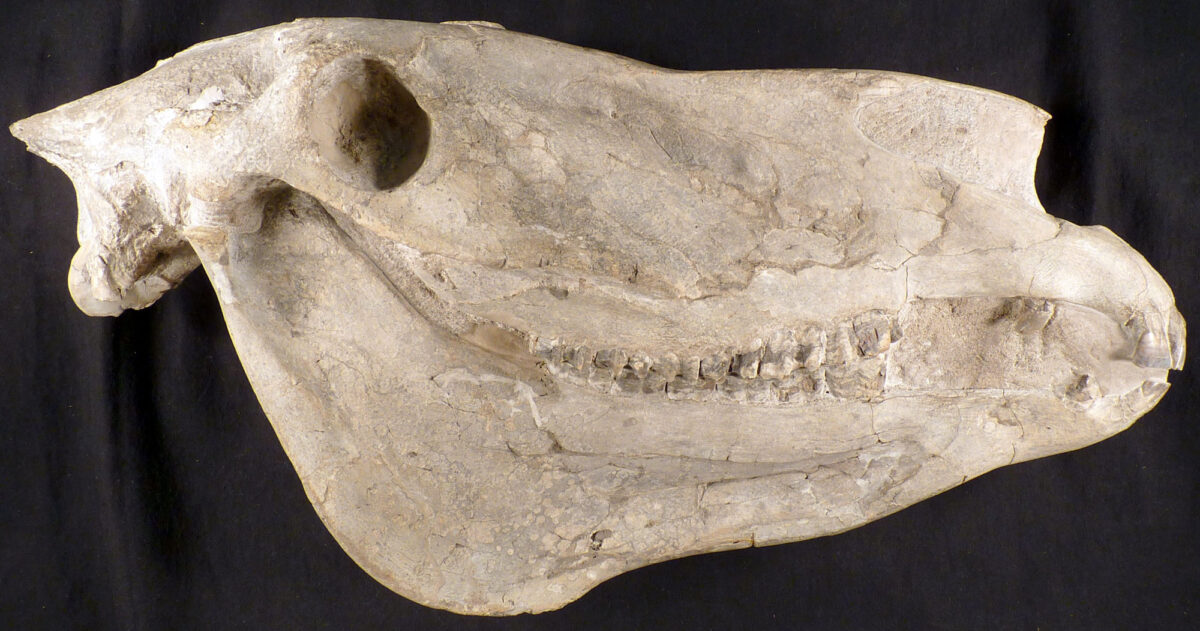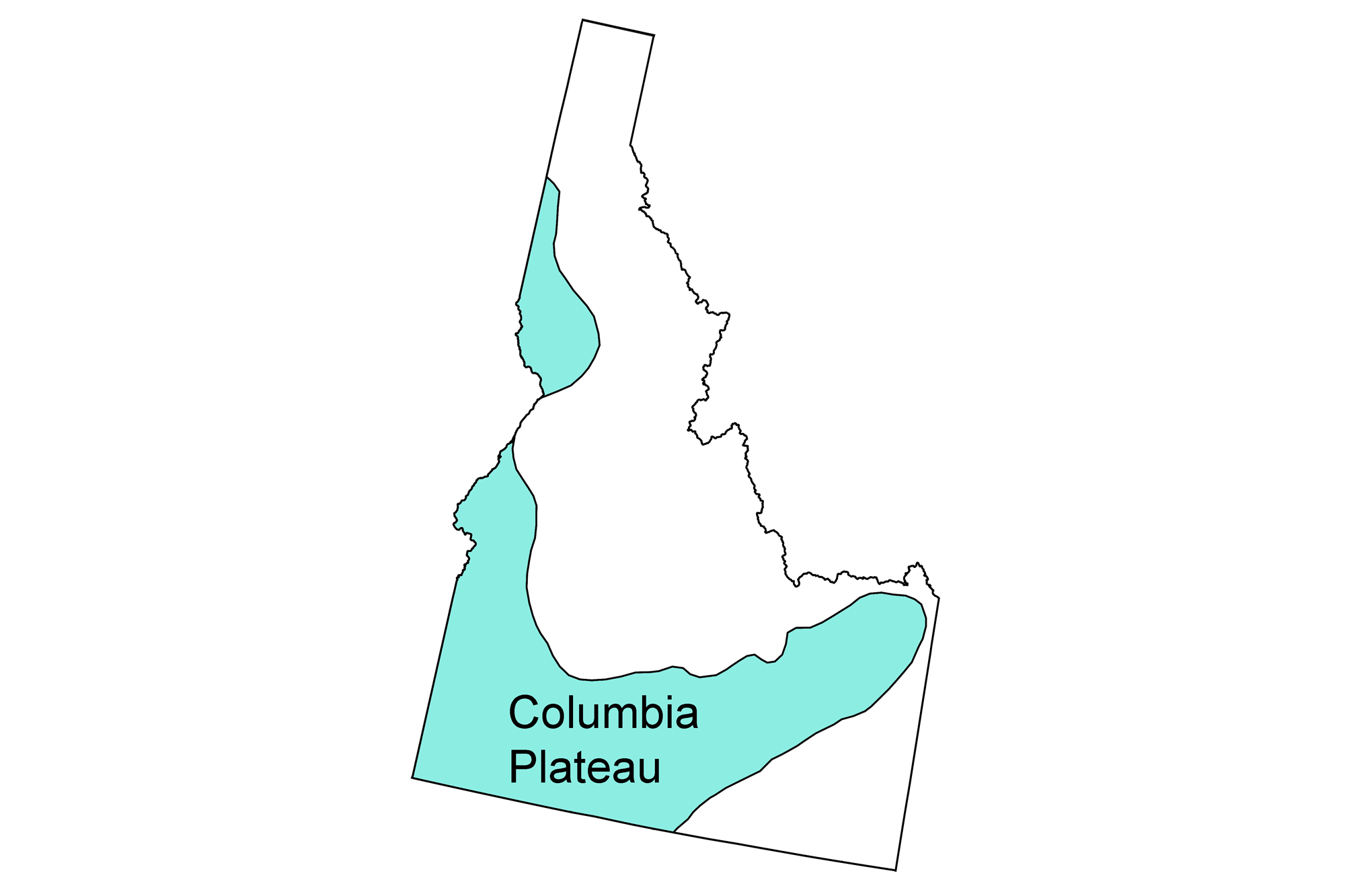
Page snapshot: Introduction to the fossils of the Columbia region of the northwest-central United States.
Topics covered on this page: Proterozoic and paleozoic fossils; Mesozoic fossils; Cenozoic fossils; Hagerman Fossil Beds; Quaternary fossils; Resources.
Credits: Most of the text on this page comes from "Fossils of the Northwest Central US" by Warren D. Allmon and Dana S. Friend, chapter 3 in the The Teacher-Friendly Guide to the Earth Science of the Northwest Central US, edited by Mark D. Lucas, Robert M. Ross, and Andrielle N. Swaby (published in 2015 by the Paleontological Research Institution; currently out of print). The book was adapted for the web by Elizabeth J. Hermsen and Jonathan R. Hendricks in 2022. Changes include formatting and revisions to the text and images. Credits for individual images are given in figure captions.
Updates: Page last updated August 30, 2022.
Image above: Skull of a Hagerman horse (Equus simplicidens), Pliocene Glenns Ferry Formation, Idaho. Photo of USNM V 11986 by Michael Brett-Surman (Smithsonian National Museum of Natural History, public domain).
Proterozoic and Paleozoic fossils
Rock formations from the late Proterozoic are the oldest fossil-bearing formations in the Columbia Plateau region. The earliest fossils found here are stromatolites, similar to those seen in Montana’s Glacier National Park, which have been reported in the Gospel Peak area of northwestern Idaho.
Paleozoic rocks are not present in the Columbia Plateau, as the land has been covered with igneous rock related to eruptions of the Yellowstone hot spot as it moved along the track of the Snake River Plain.
Mesozoic fossils
Triassic rocks occur along the state’s border with Oregon and southern Washington. Here, deposits of metamorphosed volcanic and sedimentary rocks contain a variety of marine fossils. These include corals, sponges, ammonoids, clams, gastropods, echinoids, and bryozoans. The Columbia Plateau has Triassic red beds and thin deposits of coal, both of which indicate some terrestrial deposition.
Outcrops of Jurassic-aged rocks occur in western Idaho, along the border with Oregon and southern Washington. These rocks, formed mostly in deep water marine environments, have been slightly metamorphosed. Fossils from these rocks include ammonoids and oysters. Jurassic rocks in the southeastern part of the state are mostly shallow marine yielding mostly poorly preserved fossils, including crinoids, oysters, sea urchin spines, ammonoids, and corals.
Cenozoic fossils
Hagerman Fossil Beds
The Neogene river and lake sediments of westernmost central and southern Idaho contain abundant and beautifully preserved fossils of fish, rhinos, rodents, rabbits, horses, camels, and many other species. The Hagerman Fossil Beds National Monument on the Snake River just northwest of Twin Falls, south-central Idaho, is the most famous of these deposits, and includes Horse Quarry. This particular outcrop has yielded hundreds of fossils of zebra-like Hagerman horses (Equus simplicidens) that are about 3.5 million years old.
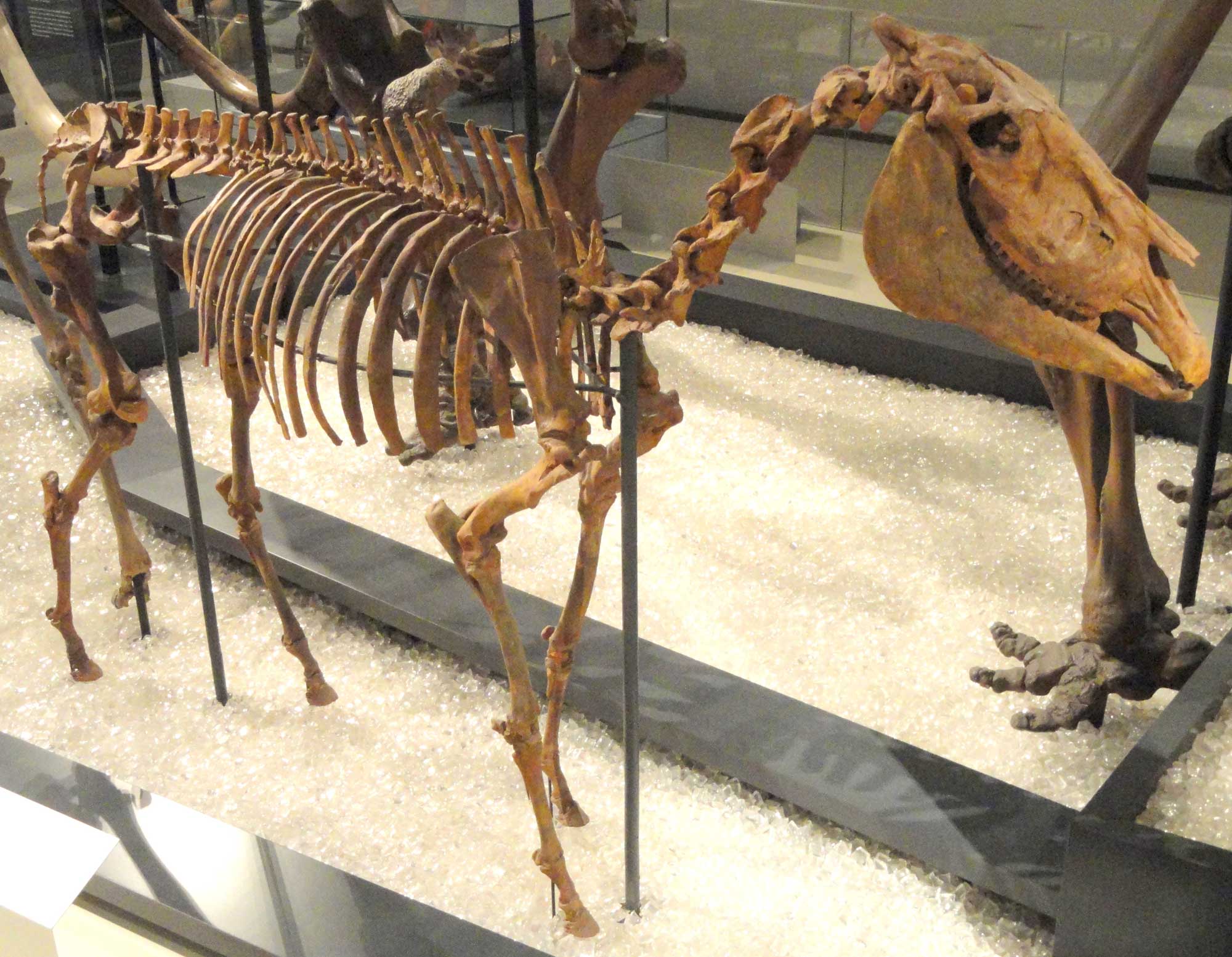
Hagerman horse (Equus simplcidens), Pliocene, Hagerman, Idaho. Specimen on display at the Royal Ontario Museum, Ontario, Canada. Photo by Daderot (Wikimedia Commons, CC0 1.0 Universal/public domain dedication).

Upper part of the skull of a dwarf pronghorn antelope (Ceratomeryx prenticei), Pliocene, Hagerman Lake Beds, Idaho. Photo by Michael Brett-Surman (National Museum of Natural History, Smithsonian Institution, pubic domain).
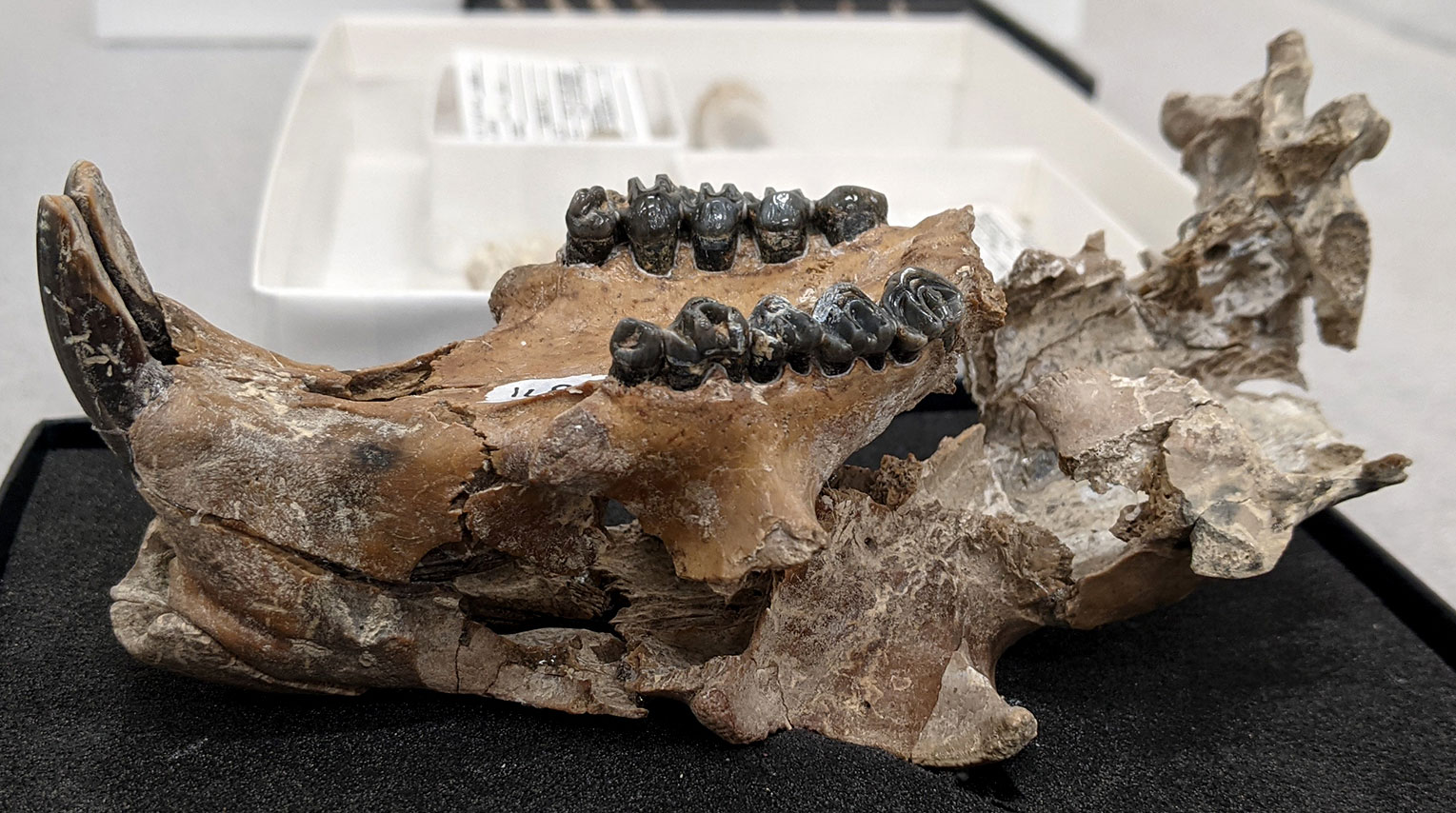
Lower jaw of a giant marmot (Paenemarmota barbouri), Pliocene, Hagerman Fossil Beds, Idaho. Photo by S. Lacy, Nation Park Service (public domain).
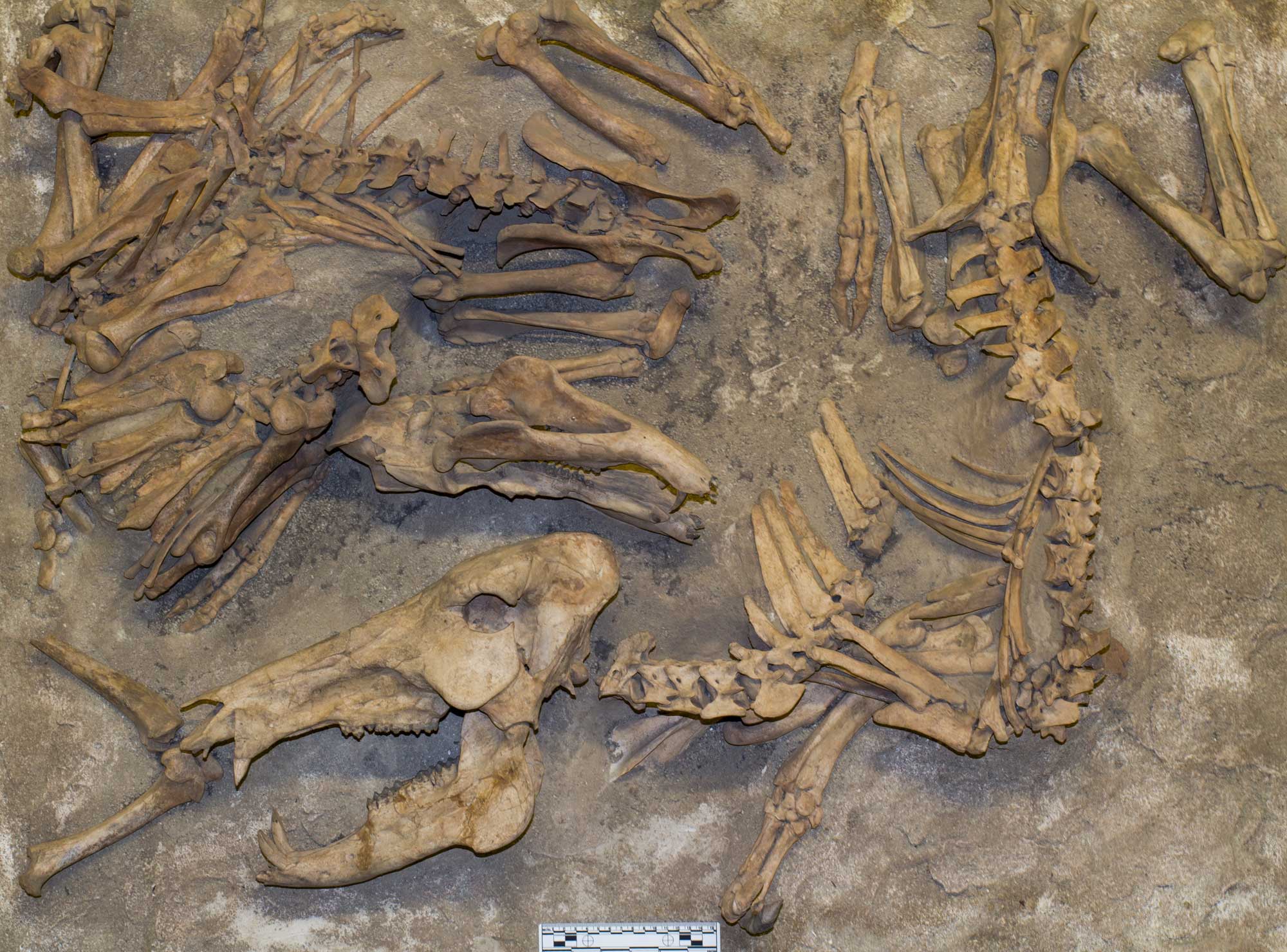
A fossil peccary (Platygonus pearcei), Pliocene, Glenns Ferry Formation, Idaho. Photo by Michael Brett-Surman (National Museum of Natural History, Smithsonian Institution, pubic domain).
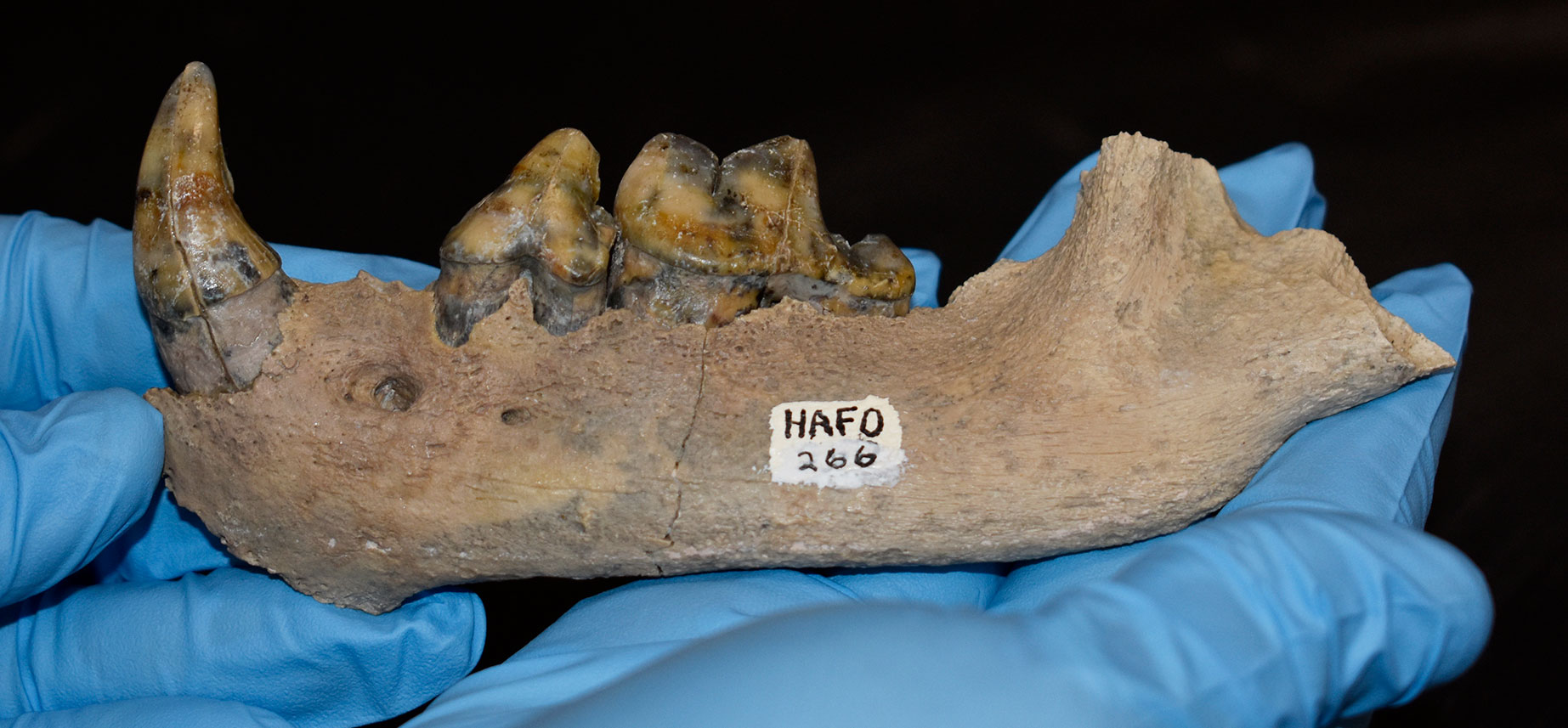
Lower jaw of a bone-crushing dog (Borophagus hilli), Pliocene, Hagerman Fossil Beds, Idaho. Photo by F. Brown, National Park Service (public domain).
Quaternary fossils
Remains of large Pleistocene mammals, like Columbian mammoths, mastodons, and bison, have been found in the Columbia Plateau. Examples include a group of mammoths at Tolo Lake in western Idaho (where a group of mammoths were found) and American Falls Reservoir in southeastern Idaho (where part of a mammoth was discovered and excavated in 2014).
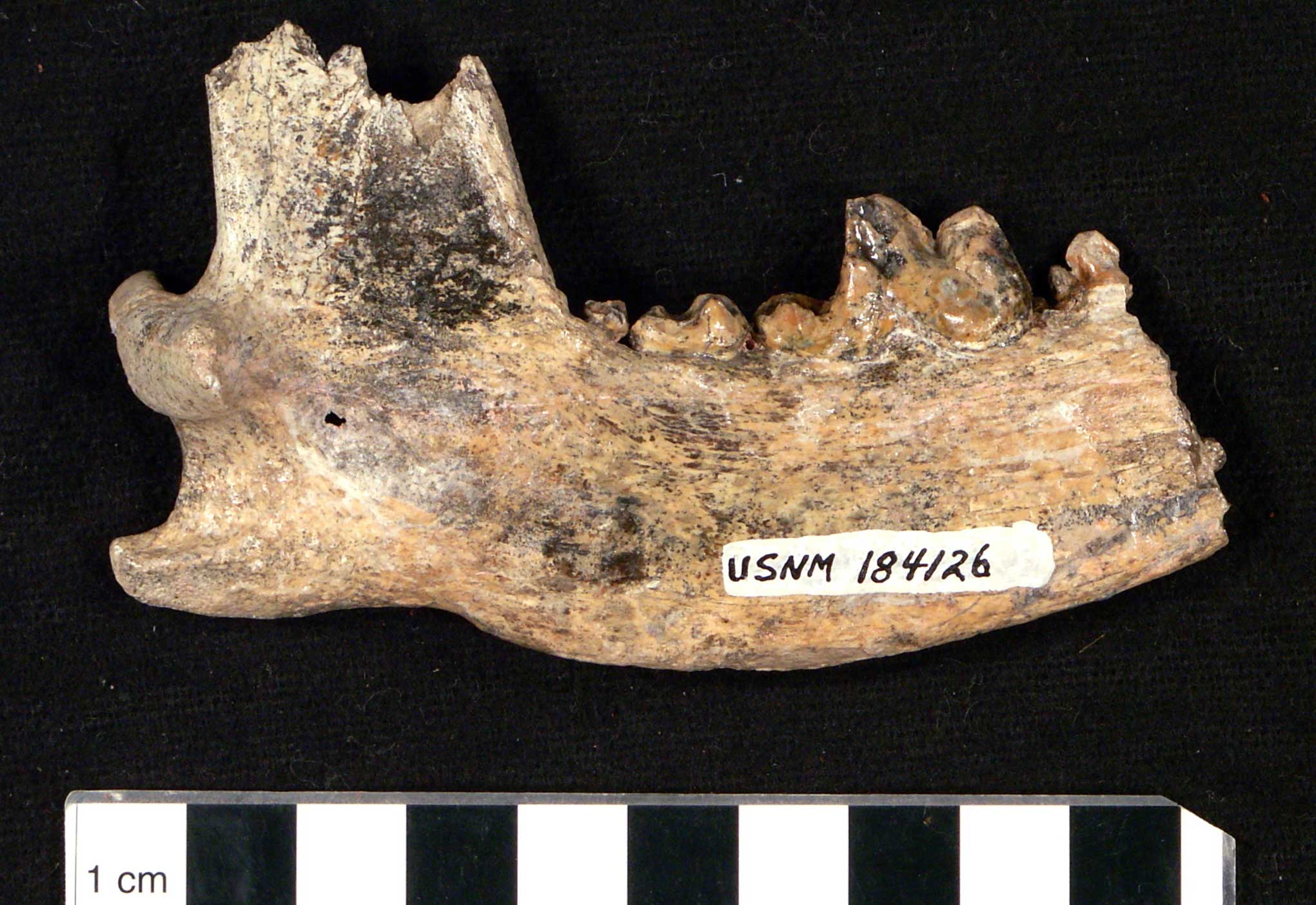
Lower jaw of an Edward's wolf (Canis edwardii), Pleistocene, Bruneau Formation, Owyhee County, Idaho. Photo by Michael Brett-Surman (National Museum of Natural History, Smithsonian Institution, pubic domain).
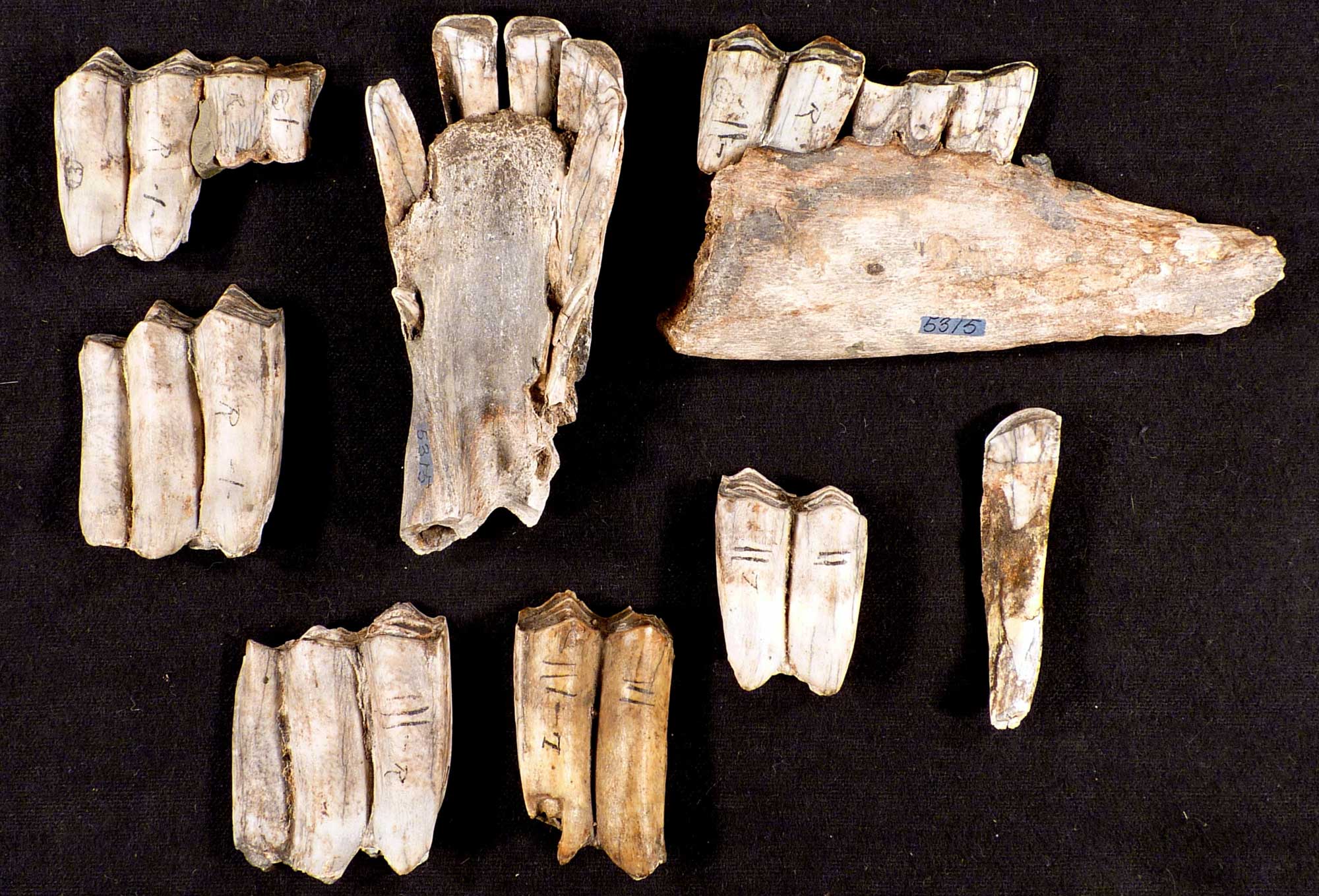
Camel teeth and jaw fragments (Camelops minidokae), Quaternary, Idaho. Photo by Michael Brett-Surman (National Museum of Natural History, Smithsonian Institution, pubic domain).
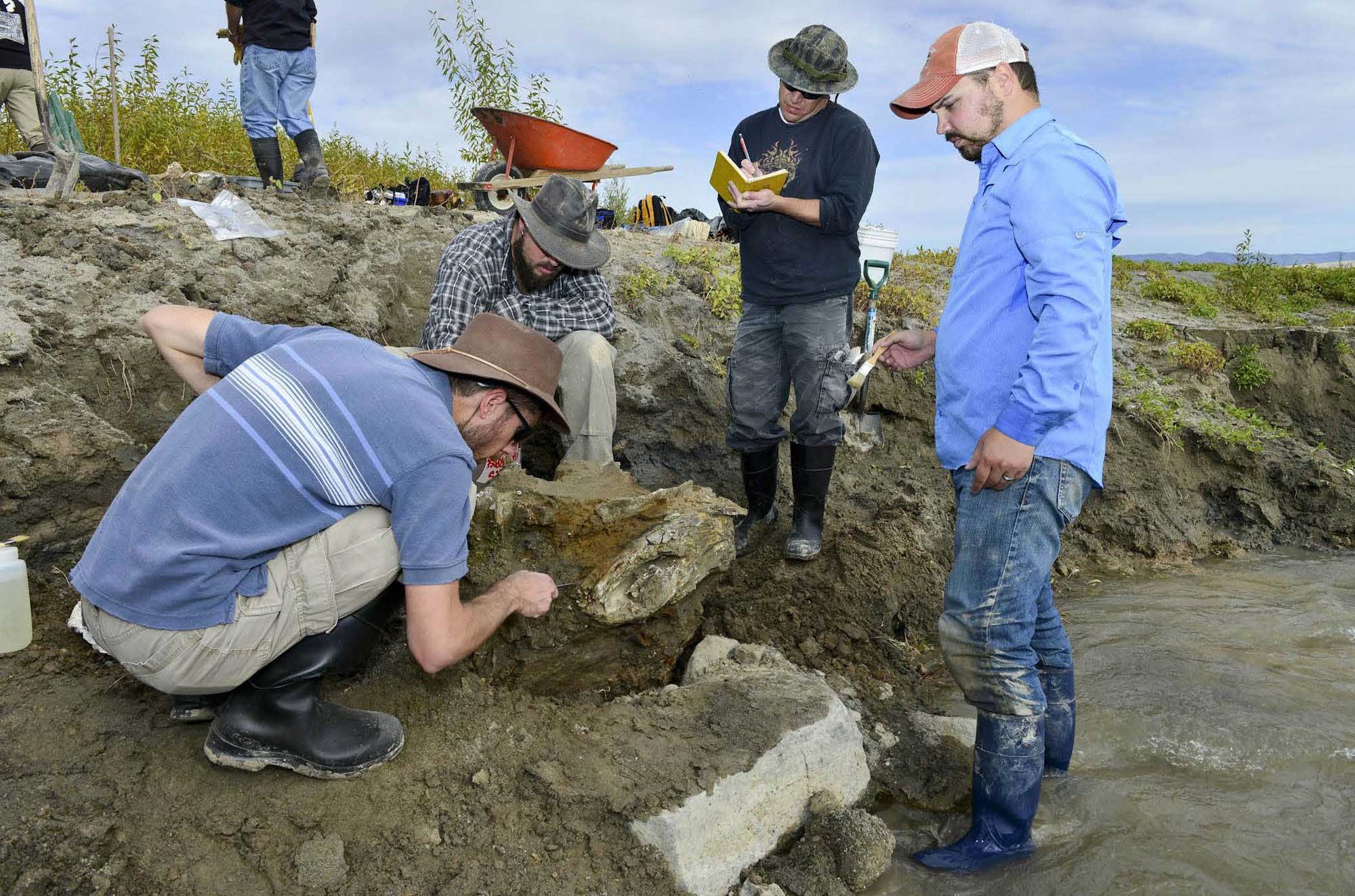
Excavation of Columbian mammoth remains at American Falls Reservoir, Idaho, in October of 2014. Photo source: Bureau of Reclamation on flickr (Creative Commons Attribution-ShareAlike 2.0 Generic license, image resized).
Resources
Resources from the Paleontological Research Institution & partners
Digital Atlas of Ancient Life Virtual Collection: https://www.digitalatlasofancientlife.org/vc/ (Virtual fossil collection featuring 3D models of fossil specimens sorted by group)
Digital Encyclopedia of Ancient Life: https://www.digitalatlasofancientlife.org/learn/
Earth@Home: Earth Science of the Western United States: Fossils of the Columbia Plateau (continues coverage of the Columbia Plateau in northern Nevada, Oregon, and Washington): https://earthathome.org/hoe/w/fossils-cp
Earth@Home: Quick guide to common fossils: https://earthathome.org/quick-faqs/quick-guide-common-fossils/



